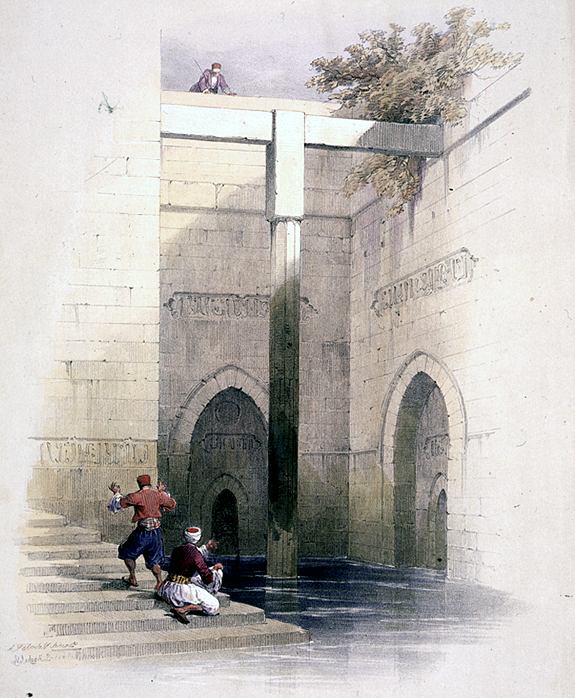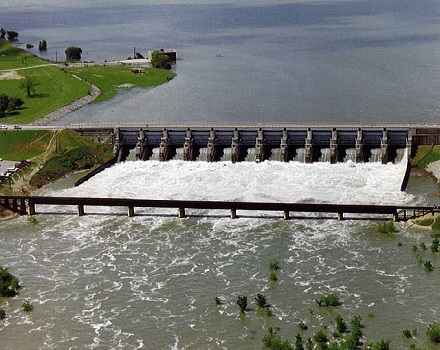It's that time of the year again...people across the northern hemisphere are looking towards dark skies and thinking of rain.
For many fish biologists, high water simply means a perfectly good spring day spent in the office. For me, it means a long day tending to a flooded experiment. But to others, spring floods often symbolize crop losses or damages to communities amounting to millions (or sometimes billions) of dollars.
For many fish biologists, high water simply means a perfectly good spring day spent in the office. For me, it means a long day tending to a flooded experiment. But to others, spring floods often symbolize crop losses or damages to communities amounting to millions (or sometimes billions) of dollars.
This wasn’t always so. The predictable flooding cycle of rivers is one of the most important natural factors contributing to the rise of human civilization. To cite a well-known example, the success of the ancient Egyptian civilization was directly tied to the annual flooding of the Nile. Believed to be a gift from the gods, floodwaters brought nutrient-rich sediments that fertilized Egypt’s bountiful crops. Floods were so important that the ancient Egyptians even developed sophisticated gauging stations (called nilometers, literally, “measurer of the Nile”) that served as bellwethers for the flood—and thus the country’s future.
 |
| Much like the USGS gauging stations of today, nilometers like this one on Rhoda Island at Cairo measured river levels. Source |
These days, many societies have a love/hate relationship with the habits of rivers...but mostly hate. As corridors of shipping and transportation, rivers have largely determined the placement of communities throughout the world. Through time, more and more farms and cities were built closer and closer to rivers.
As society developed, little consideration was given to the fact that rivers are supposed to flood.
As Americans continued to modify the landscape, flooding became more common. Removal of natural forests, prairies and wetlands meant that instead of percolating slowly through the soil, rain would run off at alarming rates. This, in turn, caused extensive flash flooding. Throughout the early 1900s, the US Army Corps of Engineers had constructed a system of levees to subdue the rivers and protect communities and farmland from annual floods.
But the levees would prove to be no match for America’s rivers.
America’s relationship with its great rivers reached a boiling point in 1927, which brought the most damaging flood in US history. After unprecedented rainfall, many Mississippi River tributaries reached levels that remain unmatched. Levees failed at over a hundred locations and at one point, the Mississippi was as much as 50 miles wide. This flood inundated around 27,000 acres, and entire towns were submerged for months. At the time, damages of the 1927 flood totaled to a third of the entire federal budget.
 |
| Scenes like this one from Desha County, Arkansas were common in 1927. Source. |
The 1927 flood forever changed America’s agrarian economy, as thousands of poor sharecroppers fled their farms to find work in major cities in the North. The 1927 left such an impact on American culture, it is chronicled throughout our musical history.
In the aftermath of the great flood, Congress passed the Flood Control Act of 1928. This charged the Corps of Engineers to institute flood control projects to tame the Mississippi and its major tributaries (namely the Arkansas, Illinois, Ohio, Red, White and Yazoo rivers), as well as the Sacramento River system in California. These projects were largely successful. Although floods like the one in 1927 are scarce, few springs pass without a news report of communities experiencing a devastating flood.
 |
| Dams like this are effective to reducing floods, but how does that affect fishes? Source. |
So they constructed levees, jetties, dykes, diversion canals and dams—all in an attempt to subdue the great rivers. However, little consideration was given to the effects these projects would have on fishes or the people that depend on them. In the second half of this article, we’ll discuss the impacts of flood reduction projects on aquatic resources.
Until then…stay dry, folks.

Lookin forward to this week's follow up on this. Its very interesting to see how humans have impacted the world. If only we knew what effect we were having at the time of our actions.
ReplyDelete